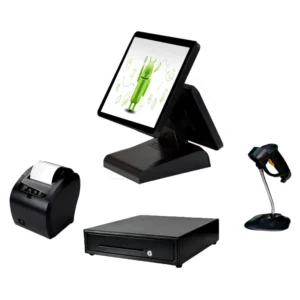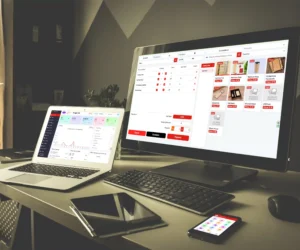What is a POS System? Understanding Hardware vs. Software Components
In today’s fast-paced business world, a Point of Sale (POS) System is the backbone of efficient transactions, inventory management, and customer engagement. But what exactly is a POS, and how do its hardware and software components work together? In this guide, we’ll break down the essentials of POS systems and highlight the key differences between hardware and software. Plus, discover how Tengai POS revolutionizes modern commerce with its Android-compatible, cloud-synced solution.
—
What is a Point of Sale (POS) System?
A POS system is a combination of hardware and software that enables businesses to process sales, accept payments, manage inventory, and analyze performance. From retail stores to restaurants, POS systems streamline operations and enhance customer experiences.
At Tengai POS, we’ve developed a cutting-edge POS system designed for flexibility and affordability. Our solution works seamlessly on Android phones, tablets, mobile POS machines, and computers via a Web App, empowering businesses to operate anywhere, anytime.
—
POS Hardware vs. Software: Key Differences

1. POS Hardware: The Physical Components
POS hardware refers to the tangible devices used to process transactions and interact with customers. Common hardware components include:
– Mobile POS Machines/Tablets/Phones: Android-compatible devices for on-the-go sales.
– Receipt Printers: Print 58mm or 80mm receipts automatically, depending on your printer.
– Barcode Scanners: Speed up checkout by scanning product codes.
– Cash Drawers: Securely store cash and coins.
– Card Readers: Accept credit/debit card payments.
Why Hardware Matters:
– Durability and compatibility are critical for smooth operations.
– Tengai POS supports a wide range of hardware, including popular Android devices and printers.

2. POS Software: The Digital Brain
POS software is the program that powers transactions, tracks sales, and manages data. Key features include:
– Sales Processing: Ring up items, apply discounts, and accept multiple payment types.
– Inventory Management: Track stock levels in real time.
– Receipt Generation: Automatically print or email receipts in **58mm or 80mm formats**.
– Reporting & Analytics: Generate insights into sales trends and customer behavior.
– Offline Mode: Data is stored locally on devices and synced to **Firebase Realtime Database** when internet is available.
Why Software Matters:
– User-friendly interfaces and cloud integration (like Firebase) ensure data security and accessibility.
– Tengai POS’s Web App allows businesses to manage operations from any computer, with no software installation required.
—
Why Choose Tengai POS?

Our Android-based POS system stands out with these unique features:
✅ Cross-Platform Compatibility: Use on Android phones, tablets, mobile POS machines, or computers.
✅ Flexible Receipt Printing: Supports 58mm and 80mm printers for all business needs.
✅ Offline-First Design: Data is stored locally on devices and synced to the cloud when online.
✅ Firebase Integration: Real-time data backup ensures no loss of critical information.
✅ Web App Accessibility: Manage your business from any browser—no downloads needed.
—
Conclusion: Hardware and Software Working Together
A successful POS system relies on the harmony between reliable hardware and intuitive software. While hardware handles the physical aspects of sales, software drives efficiency, analytics, and scalability.
With Tengai POS, you get the best of both worlds: robust Android-compatible hardware support and a powerful, cloud-connected software suite. Whether you’re a small business or a growing enterprise, our solution adapts to your needs.
Ready to Upgrade Your POS?
Download Tengai POS or Get it on Google Play, our POS system can transform your business operations!







